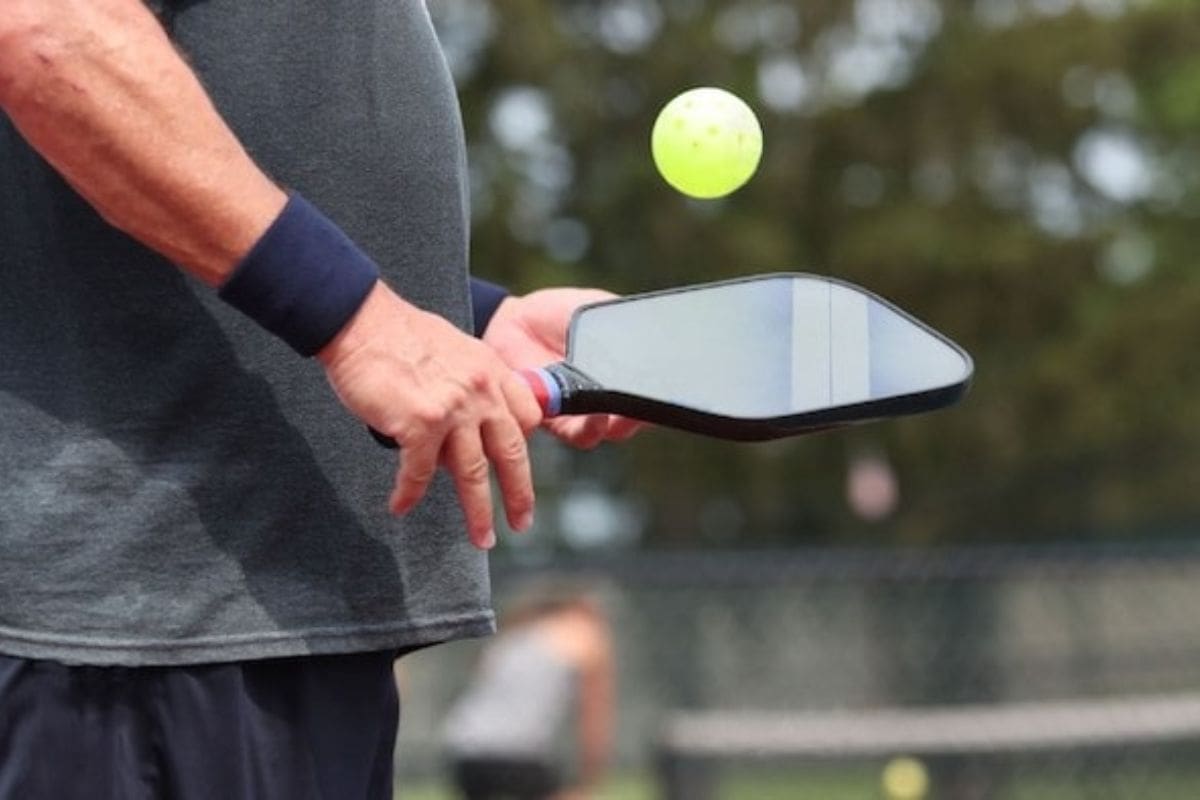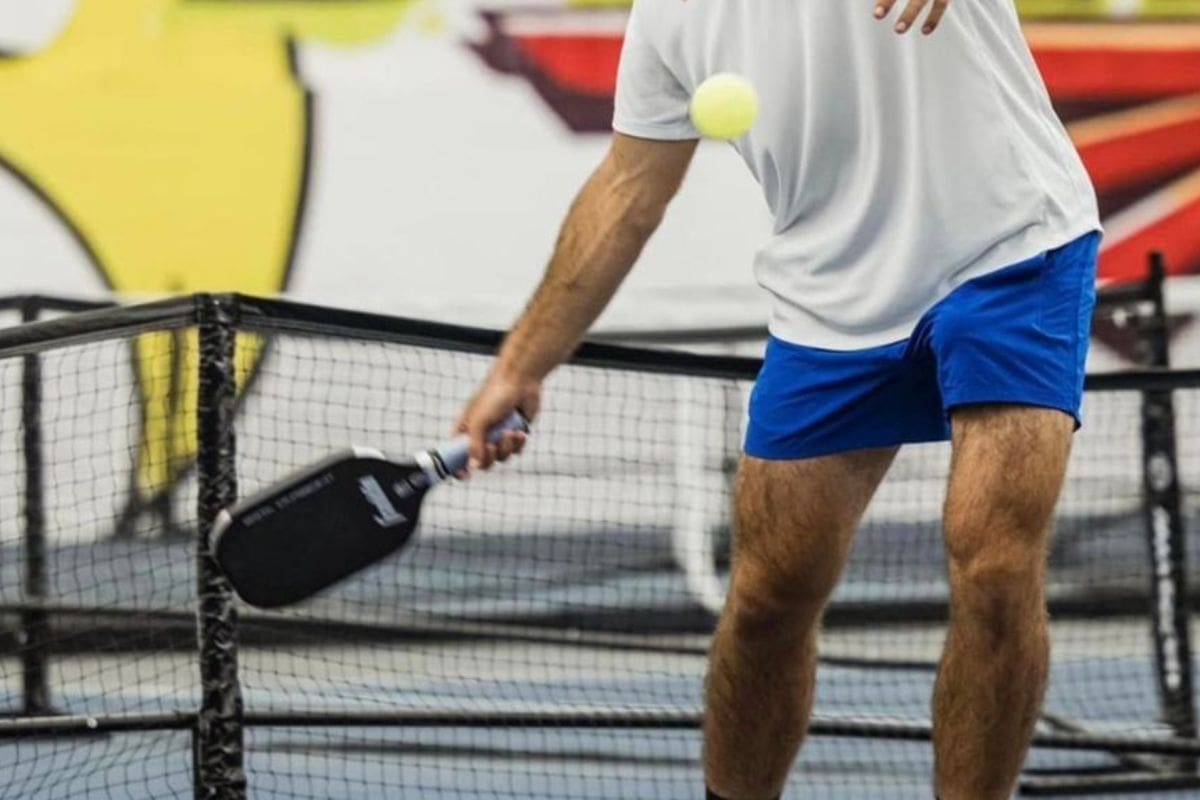Shea Underwood’s Pickleball Serve Tips: In the world of pickleball, where each point can turn on a dime, one often overlooked detail can be the difference between a game-changing serve and a missed opportunity: the grip. Shea Underwood, a pickleball expert and recent gold medalist on both the APP and PPA Tours, has spotlighted a crucial element in his video “Stop Making These Serving Mistakes and You’ll Win More Points.” It’s a revelation that could refine your game and add a new dimension to your serves.
While most recreational players rely on the Continental grip for every shot, including serves, this may not be the optimal choice. Underwood suggests that by switching grips, you can dramatically enhance your serving prowess.
The Eastern Pickleball Grip: The Beginner’s Best Friend
The Eastern grip is often the starting point for many pickleball players, particularly beginners and intermediates. It’s favored for its versatility, allowing players to seamlessly hit both forehand and backhand shots with the same grip. This neutral grip is a practical choice for those still mastering their game, offering a reliable compromise between the two types of strokes.
To adopt the Eastern grip, extend your paddle in front of you with the paddle face parallel to your body. Position your holding hand on the paddle’s face, then slide it down until it feels like a handshake with the paddle. This grip provides a solid foundation, but for those looking to add more spin and power to their serve, exploring other grips might be beneficial.

The Semi-Western Grip: Adding Spin to Your Serve
For players aiming to increase their serve’s spin, the Semi-Western grip might be worth considering. Often referred to as the pancake or frying pan grip, this technique involves positioning your index knuckle over the fourth bevel on the paddle handle. To achieve this grip, imagine laying your paddle flat on the ground and picking it up with the paddle face facing downward.
The Semi-Western grip allows for a flatter paddle face and an upward swing path, which can significantly enhance your topspin. The topspin causes the ball to dip sharply as it nears your opponent, making it challenging for them to anticipate and return. This grip can be particularly useful if you’re looking to catch your opponent off guard with a serve that suddenly drops and bounces unpredictably.
The Continental Pickleball Grip: The Hammer’s Approach
The Continental grip, or hammer grip, is another grip to consider, especially for those who frequently engage in dinks and backhands. To assume this grip, start with the Eastern grip and rotate your wrist slightly counterclockwise (for righties) or clockwise (for lefties). The V-shape between your thumb and index finger should shift slightly toward your non-paddle side, mimicking the position of holding a hammer.
This grip excels in providing powerful backhands and effective dinks but can make forehand shots more challenging. The Continental grip positions your palm behind the paddle for backhands, enhancing power and control. However, it places the palm on the side or in front of the paddle for forehands, which might limit your ability to squarely hit forehand shots. When facing a player with a Continental grip, target their forehand side to exploit this weakness.
Why Topspin Matters
Topspin, achieved by making the top of the ball rotate away from you, has a significant impact on your serve. It causes the ball to arc high and then dip quickly, making it difficult for your opponent to predict and react to its trajectory. This sudden drop can catch opponents off guard, particularly if they’ve already begun to advance toward the kitchen.
Choosing the Right Grip for You
If you’re unsure which grip to use, Underwood advises starting with the Semi-Western grip for maximum topspin. It might take some practice to get it right, as it’s more extreme than the Eastern forehand grip. If you find the Semi-Western grip challenging, switch to the Eastern forehand grip and refine it with consistent practice.
The key to a successful serve lies in understanding and utilizing the right grip to match your playing style and objectives. With Underwood’s insights, you can elevate your serving game, keeping opponents on their toes and setting yourself up for a stronger third shot.

News in Brief: Shea Underwood’s Pickleball Serve Tips
In his video “Stop Making These Serving Mistakes and You’ll Win More Points,” pickleball expert Shea Underwood emphasizes the importance of grip choice for a powerful serve. While many players use the Continental grip, Underwood suggests that experimenting with different grips can enhance your serving game.
The Eastern grip, common among beginners, offers versatility for both forehand and backhand shots. For increased spin, the Semi-Western grip—where the index knuckle rests on the paddle’s fourth bevel—allows for topspin serves that dip sharply, making returns challenging.
ALSO READ: North Elba Pickleball Courts Nearing Final Stages, Excitement Builds

